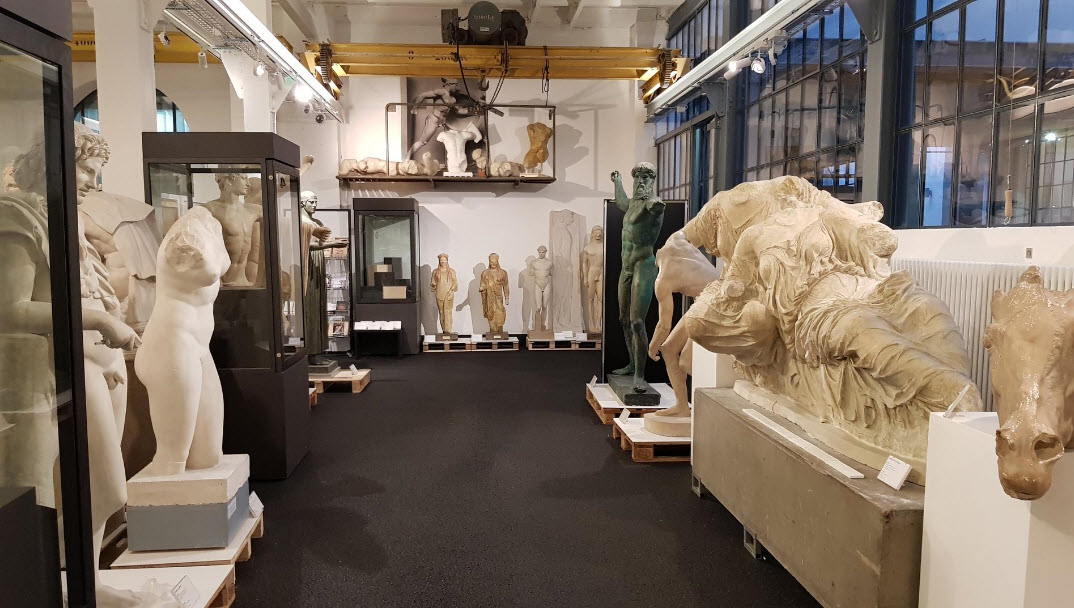The Plaster Cast Collection
Information:
The Collection is closed until Monday, February 19, when it will reopen as usual, on Mondays and Wednesdays from 10am to 6pm


The Plaster Cast Collection is open for public visits on Monday and Wednesday from 10 AM to 6 PMAccess: 10, rue des Vieux-Grenadiers, 1205 Genève Opening Hours: on demand or depending on the exhibitions Public transport : Price: free Address : |
The Plaster Cast Collection at the University of Geneva regularly hosts temporary exhibitions and offers activities for both schools and the general public. You can access the Cast Collection website here. For further information, please contact moulages(at)unige.ch.
A bit of history…
Stylistic comparison is very important for teaching and research in the field of Classical Archaeology. Today, the plaster copies of ancient statues and works of art preserved in the Cast Collection at the University of Geneva still mainly serve that purpose. Contrasting the original ancient artworks and statues preserved in a number of museums and sites around the world is indeed impossible, and photographs only provide an approximate notion of their volumes and shapes. Hence the need to use tri-dimensional copies.
The origins of the present Cast Collection at the University of Geneva go back to the eighteenth century, when the Geneva School of Drawing was first founded (1751): drawing classes, at that time, aimed at developing the esthetical senses of the learning craftsmen, and essentially consisted in the integration of esthetical standards through imitation. Cast copies of ancient statues were used for that purpose, alongside live models, for more than a century.
Additional cast copies were acquired in the nineteenth century due to the artistic importance of the originals. They reflect the neo-classical taste of that time, but also illustrate a new craze for Antiquity in the nineteenth century, a period in which multiple major excavation campaigns were launched in the Mediterranean and important discoveries made.
Another group of plaster casts was acquired by the first Professor for Classical Archaeology at the University of Geneva, Francis de Crue. These testify to the latter’s more historical than aesthetical preoccupations. In addition to various later bequests and donations, the collection was significantly enriched by another Professor for Classical Archaeology, José Dörig, and thus also reflects the latter’s activities and research. The collection owes to Professor Dörig a number of rare, at time even unique plaster casts, such as a number of slabs from the Hephaisteion friezes in Athens, or the Amazon from the Conservators’ Palace in Rome.
More than a research and teaching instrument, the collection today represents an important legacy, deserving to be studied and showcased.

